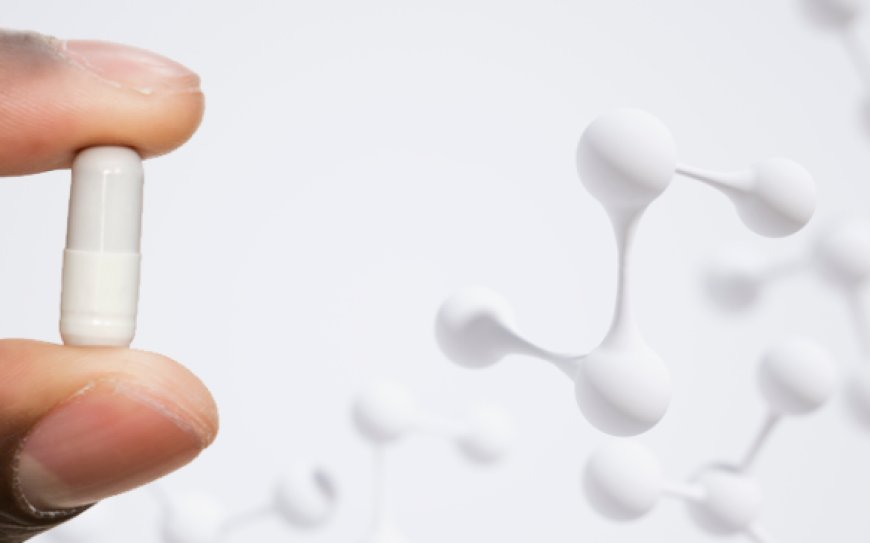What Is Hydroxychloroquine and How Does It Work?
Hydroxychloroquine is a prescription medication that has been in medical use for decades, originally developed to prevent and treat malaria.

Buy Hydroxychloroquine Onlineis a prescription medication that has been in medical use for decades, originally developed to prevent and treat malaria. Over time, it found an important role in treating autoimmune diseases like rheumatoid arthritis and systemic lupus erythematosus (SLE) due to its anti-inflammatory and immunomodulatory properties. More recently, hydroxychloroquine attracted global attention during the COVID-19 pandemic, sparking both medical interest and controversy.
Despite the attention and debate, the drug remains a vital therapeutic agent for many patients. This article provides an in-depth look at what hydroxychloroquine is, how it works, and what conditions it treats.
What Is Hydroxychloroquine?
Hydroxychloroquine sulfate is a synthetic derivative of chloroquine, a drug developed to combat malaria in the mid-20th century. Marketed under brand names like Plaquenil, hydroxychloroquine is available in 200 mg oral tablets and is considered safer and better tolerated than its predecessor.
While initially used as an antimalarial, hydroxychloroquine is now primarily prescribed for:
-
Systemic lupus erythematosus (SLE)
-
Rheumatoid arthritis (RA)
-
Discoid lupus
-
Other autoimmune and inflammatory conditions
How Does Hydroxychloroquine Work?
The exact mechanism of hydroxychloroquine is multifaceted, which explains its use in a variety of conditions. It acts on cells of the immune system and interferes with processes that lead to inflammation, infection, and autoimmunity.
1. Alters pH Inside Cells
Hydroxychloroquine accumulates inside lysosomesacidic organelles found within cellsand raises their internal pH. This pH change disrupts:
-
Protein degradation
-
Antigen processing
-
Cytokine production
This reduces the immune system's overactive response, which is helpful in autoimmune diseases.
2. Inhibits Antigen Presentation
In autoimmune disorders, the immune system mistakenly attacks healthy tissues. Hydroxychloroquine impairs the presentation of self-antigens to immune cells, reducing autoimmune activation.
3. Decreases Cytokine Release
Cytokines like interleukin-1 (IL-1) and tumor necrosis factor-alpha (TNF-?) drive inflammation in diseases like RA and lupus. Hydroxychloroquine reduces their release, helping to control inflammation.
4. Antiviral Effects (Experimental)
Hydroxychloroquine may interfere with viral entry and replication by:
-
Inhibiting endosomal acidification
-
Disrupting glycosylation of ACE2 receptors (entry point for SARS-CoV-2)
However, despite early laboratory evidence, clinical trials have not confirmed efficacy for COVID-19 treatment.
Conditions Treated with Hydroxychloroquine
? 1. Malaria
Hydroxychloroquine was developed to prevent and treat Plasmodium malaria infections, especially in areas with chloroquine-sensitive strains. Today, due to growing resistance, its less commonly used for malaria treatment.
? 2. Systemic Lupus Erythematosus (SLE)
SLE is an autoimmune disorder affecting the skin, joints, kidneys, and other organs. Hydroxychloroquine:
-
Reduces flares and disease activity
-
Prevents long-term damage
-
Lowers the risk of blood clots
-
Improves overall survival
? 3. Rheumatoid Arthritis (RA)
In RA, hydroxychloroquine is often used as a disease-modifying antirheumatic drug (DMARD). It helps:
-
Control joint inflammation
-
Reduce morning stiffness and pain
-
Prevent long-term joint damage
It's often prescribed in combination with other DMARDs like methotrexate.
? 4. Other Uses
Hydroxychloroquine is being explored or used off-label for:
-
Discoid lupus
-
Sjogrens syndrome
-
Chronic Q fever
-
Sarcoidosis
-
Porphyria cutanea tarda
Dosage and Administration
Hydroxychloroquine is taken orally, usually once or twice daily with food or milk to reduce stomach upset.
Typical dosages:
-
Lupus/RA: 200400 mg per day
-
Malaria prevention: 400 mg once weekly, starting 12 weeks before travel
-
Malaria treatment: Initial 800 mg dose, followed by smaller doses over 3 days
Note: The dose is often adjusted based on weight, kidney function, and response.
Side Effects and Risks
Hydroxychloroquine is generally well-tolerated, especially when used at proper doses. However, long-term use or high doses may cause side effects.
? Common Side Effects
-
Nausea or upset stomach
-
Diarrhea
-
Headache
-
Dizziness
-
Skin rashes
These are usually mild and temporary.
? Serious Side Effects (Rare)
1. Retinal Toxicity (Eye Damage)
-
Long-term use can cause damage to the retina, leading to vision problems or blindness.
-
Risk increases after 5+ years of use or high cumulative doses.
-
Patients should undergo annual eye exams after 5 years of continuous therapy.
2. Cardiac Toxicity
-
May cause QT prolongation, especially when combined with other drugs that affect heart rhythm.
3. Hypoglycemia
-
Rarely, it can cause low blood sugar, even in non-diabetic patients.
4. Blood Disorders
-
Very rarely, it may affect blood cell counts (e.g., anemia, leukopenia).
Drug Interactions
Hydroxychloroquine can interact with:
-
Digoxin May increase digoxin levels
-
Antacids Reduce absorption of hydroxychloroquine; space doses by 4 hours
-
Drugs that prolong QT interval (e.g., azithromycin, some antipsychotics) Increase risk of cardiac arrhythmia
-
Insulin or antidiabetic drugs Risk of hypoglycemia
Always inform your doctor about all medications and supplements you're taking.
Precautions and Monitoring
Before starting hydroxychloroquine, patients should:
-
Have a baseline eye exam
-
Monitor for allergic reactions or unusual symptoms
-
Discuss pregnancy and breastfeedingwhile relatively safe, it's used cautiously
Ongoing monitoring may include:
-
Annual eye exams
-
Blood tests for liver and kidney function
-
ECG monitoring in high-risk individuals
Hydroxychloroquine and COVID-19: The Controversy
During the early stages of the COVID-19 pandemic, hydroxychloroquine was proposed as a treatment due to its antiviral and immune-modulating properties. Initial lab studies were promising, but large-scale clinical trials ultimately failed to show a clear benefit.
Key takeaways:
-
FDA revoked emergency use authorization in June 2020.
-
It is not recommended for prevention or treatment of COVID-19 outside clinical trials.
-
The controversy highlighted the need for evidence-based practice in global health emergencies.
Availability and Storage
-
Store hydroxychloroquine at room temperature (20C to 25C).
-
Keep it away from moisture and direct sunlight.
-
Always keep out of reach of children.
Final Thoughts
Hydroxychloroquine remains a valuable and trusted medication for treating autoimmune diseases and malaria. It has improved the quality of life for countless patients living with chronic inflammatory conditions like lupus and rheumatoid arthritis.
While the drug is not without risksparticularly regarding eye healthappropriate dosing, regular monitoring, and medical supervision can ensure safe and effective use. Though it was mired in controversy during the COVID-19 pandemic, hydroxychloroquines true value lies in its proven role as an immunomodulatory and antimalarial agent.
Always consult your doctor before starting or stopping hydroxychloroquine, and never self-medicate based on unverified claims. Used wisely, it remains a cornerstone drug in modern medicine.






































